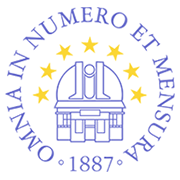SOFT X-RAY PHOTOELECTRON-PHOTOION-PHOTOION COINCIDENCE (PEPIPICO) SPECTROSCOPY OF ISOLATED MOLECULAR SYSTEMS AT PLEIADES BEAMLINE (SOLEIL SYNCHROTRON)
Publication
BOOK OF ABSTRACTS AND CONTRIBUTED PAPERS - International Meeting on Data for Atomic and Molecular Processes in Plasmas: Advances in Standards and Modelling, Page 25, https://doi.org/10.69646/aob241105
BOOK OF ABSTRACTS AND CONTRIBUTED PAPERS - International Meeting on Data for Atomic and Molecular Processes in Plasmas: Advances in Standards and Modelling, November 12-15, 2024, Palić, Serbia, Edited by Vladimir A. Srećković, Aleksandra Kolarski, Milica Langović, Filip Arnaut and Nikola Veselinović
Published by: Institute of Physics Belgrade
Published: 26. 11. 2024.
Abstract
The soft X-ray beamline PLEIADES at Synchrotron SOLEIL facility (France) will be presented, with the focus on the energy and angle resolved (Auger) electron- ion coincidence permanent setup (EPICEA). The EPICEA allows for photoelectron-photoion-photoion coincidence (PEPIPICO) and Auger electron- photoion-photoion coincidence (AEPIPICO) spectroscopy (PLEIADES, 2019; Ganguly et al., 2022). The setup consists of a double toroidal electron analyzer (DTA) (Miron et al., 1997) and a 3D focusing ion TOF spectrometer. Electrons emitted at an angle of 54.71 are accepted by the DTA and selected according to their predetermined pass energy (Ep). The detection electron kinetic energy window is about 12% of the defined Ep, whereas the energy resolution is about 1%of the Ep. After exiting the DTA, the electrons are recorded by a delay-line position sensitive detector (DLD40, Roentdek GmbH), where the distance of the electron position from the center is inversely proportional to its kinetic energy. The interaction region is placed in a zero- electric-field space between two extraction grids. The detection of an electron triggers a pulsed field that accelerates the ions toward a hexagonal delay-line detector (HEX75, Roentdek GmbH) placed after the TOF drift tube. The positions on the detector and time of flight of all extracted ions are recorded. Additionally, a pulse generator (Stanford DG645) was used to produce random triggers, which extract ions present in the interaction without a coincident electron event, thus allowing to analyze the background ion signal recorded due to false coincidences. In the present lecture, example results will be presented for several different molecular targets that are interesting for a range of research topics. - FULL TEXT available in PDF.




